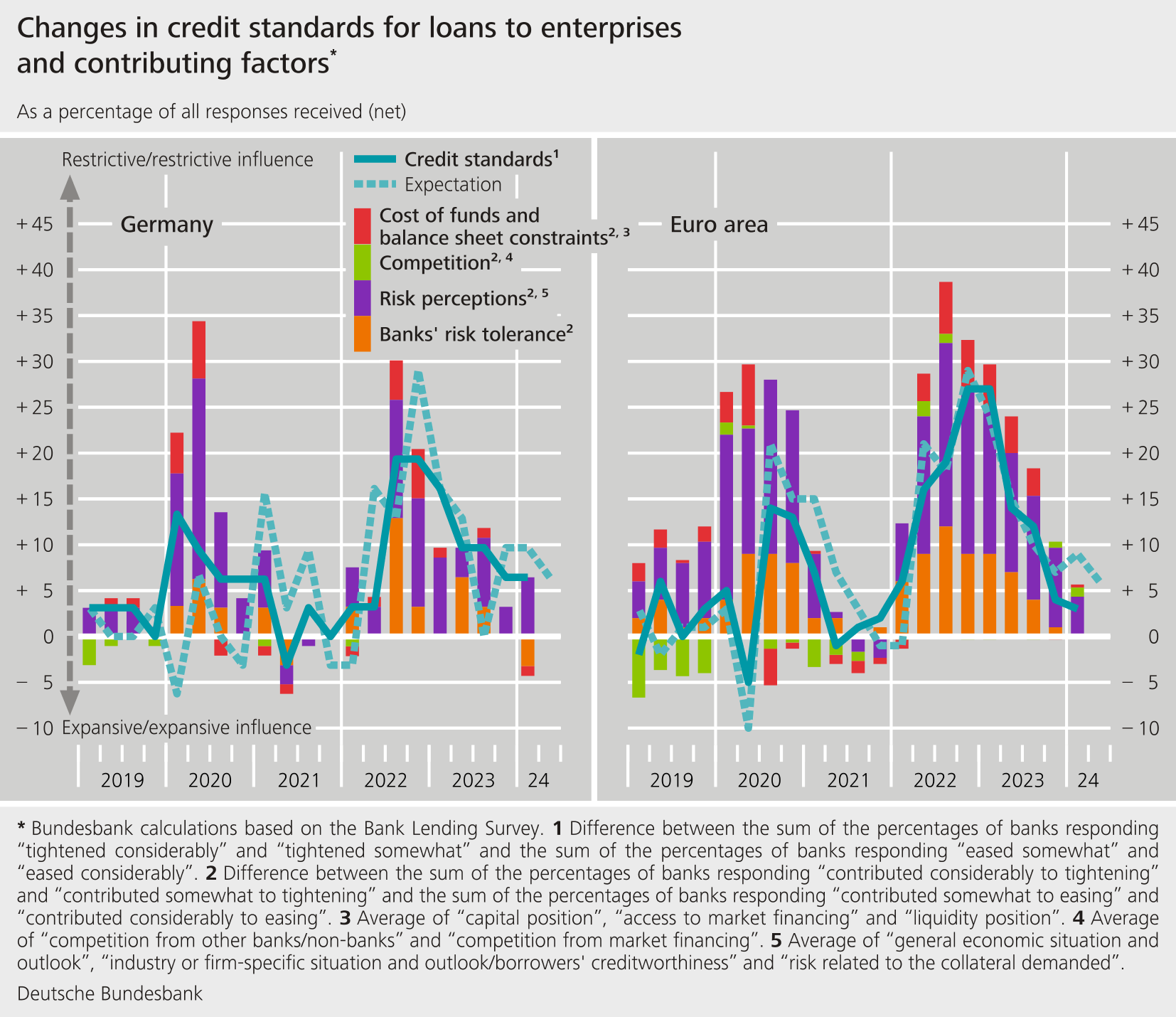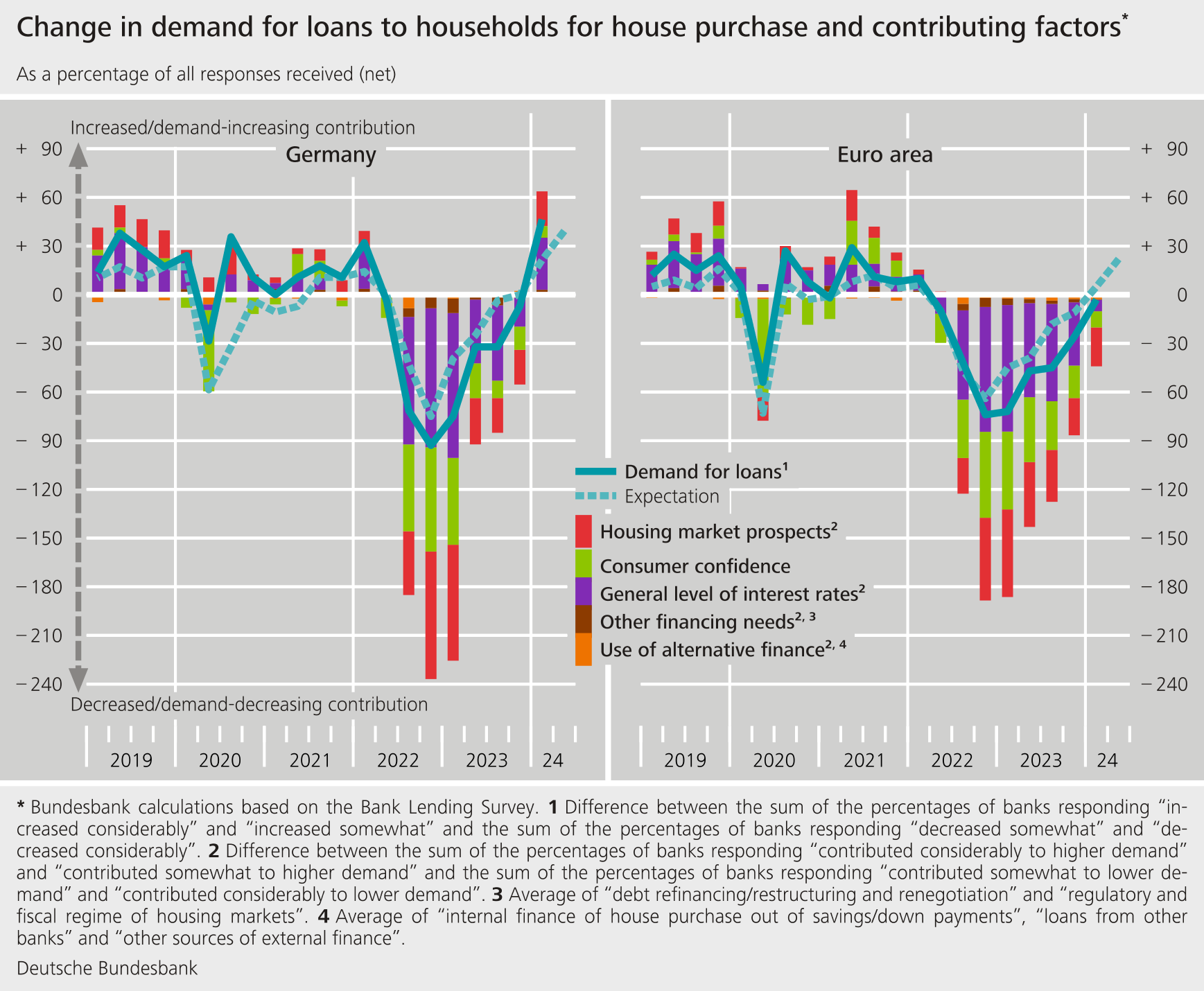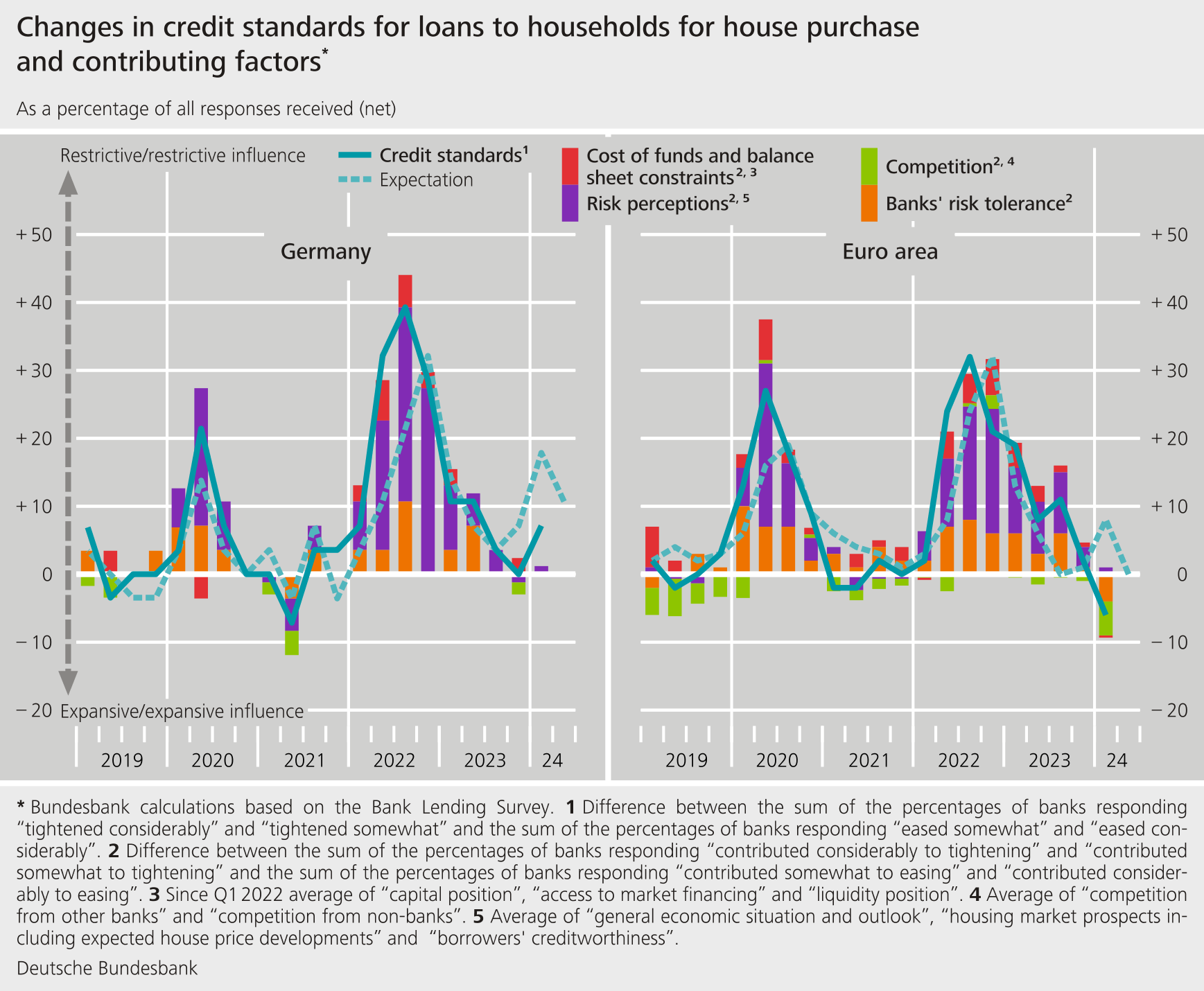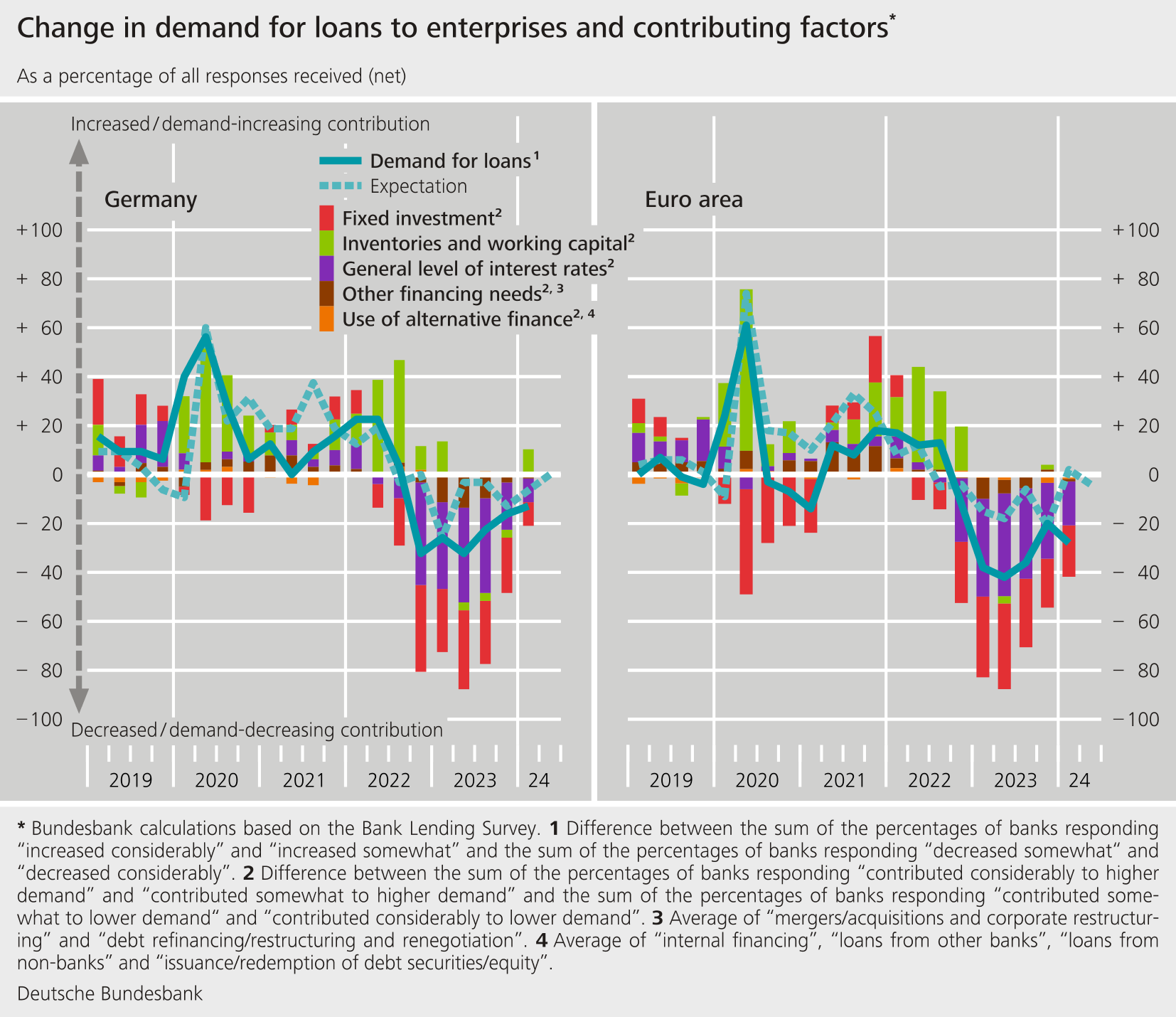April results of the Bank Lending Survey in Germany Revival of demand for loans for house purchase
- The German banks responding to the Bank Lending Survey (BLS) tightened their credit standards for loans to enterprises, loans to households for house purchase, and consumer credit and other lending on balance in the first quarter of 2024, as expected. In all loan categories, however, the tightening was somewhat less than had been planned in the previous quarter.
- The surveyed banks made hardly any changes to their credit terms and conditions for loans to enterprises and for loans to households for house purchase. They tightened their terms and conditions for consumer credit and other lending.
- Demand for loans to enterprises diminished once again. Overall, however, the decline was smaller than in the previous quarters. Households’ demand for loans for house purchase and for consumer credit and other lending went back up for the first time in around two years.
- The ECB Governing Council’s past and expected key interest rate decisions had a positive impact on net interest income, thereby contributing to an improvement in banks’ profitability in the 2023-24 winter half-year. For the 2024 summer half-year, however, banks are expecting the key interest rate decisions to have a negative impact on their net interest income as well as on their profitability.
The BLS covers three loan categories: loans to enterprises, loans to households for house purchase, and consumer credit and other lending to households. On balance, the surveyed banks tightened their credit standards (i.e. their internal guidelines or loan approval criteria) in all loan categories. The net percentage of banks that tightened their requirements was +6% for loans to enterprises (compared with +6% in the previous quarter), +7% for loans for house purchase (compared with 0% in the previous quarter), and +14% for consumer credit and other lending (compared with +4% in the previous quarter).In all loan categories, the adjustments were somewhat smaller than the plans for the first quarter indicated in the previous survey round. The banks’ rationale for tightening their credit standards mainly involved what they saw as elevated credit risk and the transposition of the provisions of the seventh update to the Minimum Requirements for Risk Management (MaRisk). For the second quarter of 2024, banks are planning to once again tighten their credit standards on balance in all three loan categories, citing the same reasons as those behind the current tightening.

On aggregate, banks made hardly any changes to their credit terms and conditions (i.e. the terms and conditions actually approved as laid down in the loan contract) for loans to enterprises and for loans to households for house purchase. By contrast, credit terms and conditions for consumer credit and other lending were tightened. The banks’ rationale for tightening their credit terms and conditions for consumer credit and other lending was mainly their lower risk tolerance and what they perceived as elevated credit risk.
Demand for bank lending in Germany shrank for loans to enterprises and went back up for loans to households for the first time in around two years.

The decline in demand for loans to enterprises was smaller overall than in previous quarters, but stronger than had been expected by the banks in the previous quarter. It was driven by the general level of interest rates and low financing needs for fixed investment as well as for mergers, acquisitions and corporate restructuring. By contrast, financing needs related to inventories and working capital resumed providing positive stimulus.
The revival of demand for loans to households for house purchase was driven primarily by the general level of interest rates. This development is likely to be attributable mainly to the decline in long-term capital market rates. Households’ improved housing market prospects, as reported by the banks, stimulated demand for loans to households for house purchase again for the first time in two years. In addition, consumer confidence also provided a positive boost again for the first time in several quarters. Banks mainly attributed the increase in demand for consumer credit and other lending to households’ increased propensity to buy. The loan rejection ratio rose once again in all loan categories. For the next three months, the surveyed banks are expecting enterprises’ demand for borrowing to remain unchanged. In the case of loans to households for house purchase as well as consumer credit and other lending, by contrast, they are expecting the increase in demand to continue.
The April survey round contained ad hoc questions on participating banks’ financing conditions and the impact of the ECB Governing Council’s past and expected key interest rate decisions. It also included questions on the impact of the Eurosystem’s monetary policy asset portfolios and on the third series of targeted longer-term refinancing operations (TLTRO III).
Against the backdrop of conditions in financial markets, German banks reported that their funding situation had improved somewhat compared with the previous quarter. The ECB Governing Council’s key interest rate decisions have had, overall, a positive impact on banks’ profitability over the past six months. However, fewer banks reported a positive impact than in the last survey round in October 2023. An increase in net interest income continues to be the factor to which the positive impact is attributed. For the 2024 summer half-year, banks are expecting the key interest rate decisions to have a negative impact on their net interest income as well as on their profitability. Taken in isolation, changes in Eurosystem monetary policy securities holdings had a negative impact on banks’ market financing conditions. The banks assessed the impact on profitability as positive. This is because the monetary policy asset portfolios contributed to an increase in net interest income. The effects of the TLTRO III operations on banks’ financial situation continued to peter out over the past six months, with banks reporting a positive impact only on their liquidity position.
The Bank Lending Survey, which is conducted four times a year, took place between 29 February and 15 March 2024. In Germany, 33 banks took part in the survey. The response rate was 100%.

